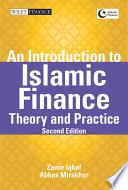
Performance Evaluation and High Speed Switching Fabrics and Networks
ATM, Broadband ISDN, and MAN Technology (A Selected Reprint Volume)
A handy source for practicing engineers and researchers, this book offers collected examples of successful performance evaluation of high speed telecommunications switching fabrics such as ATM networks and high speed interconnection technology for computers. It emphasizes the performance evaluation of such switches as they apply to predicting a proposed system's performance through the use of statistical models -- a cost-saving way for communications engineers to test the design of a system without having to construct it.
- ISBN 10 : UCSD:31822016890832
- Judul : Performance Evaluation and High Speed Switching Fabrics and Networks
- Sub Judul : ATM, Broadband ISDN, and MAN Technology (A Selected Reprint Volume)
- Pengarang : Thomas G. Robertazzi,
- Kategori : Technology & Engineering
- Penerbit : Wiley-IEEE Press
- Bahasa : en
- Tahun : 1993
- Halaman : 488
- Google Book : http://books.google.co.id/books?id=k1FGAQAAIAAJ&dq=intitle:ATM&hl=&source=gbs_api
-
Ketersediaan :
A handy source for practicing engineers and researchers, this book offers collected examples of successful performance evaluation of high speed telecommunications switching fabrics such as ATM networks and high speed interconnection ...





